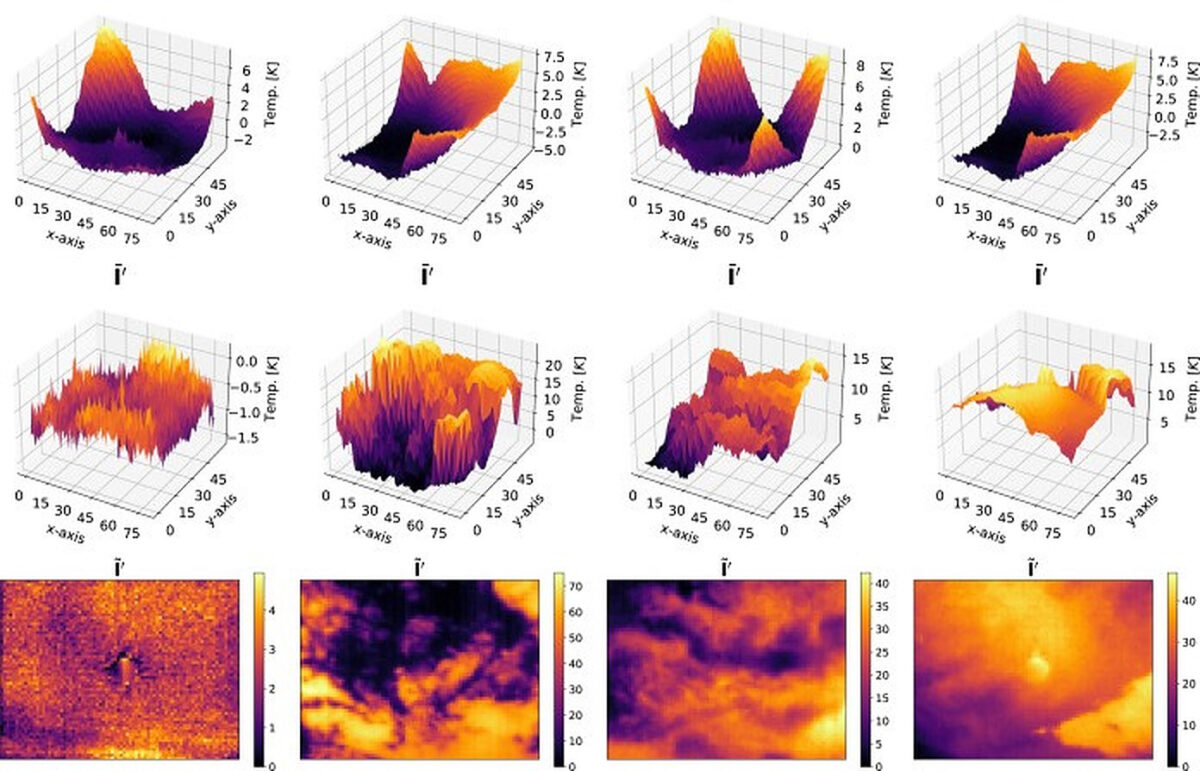A research group in the United States has created a solar forecasting methodology that utilizes a combination of infrared (IR) images and global solar irradiance measurements.
The scientists claim that the novel approach is able to improve solar nowcasting and intra-hour forecasting, while being applicable to PV real-time markets and the optimization of energy dispatch into microgrids.
“Sky imager is more expensive than regular visible light all-sky imagers, but it can also approximate the height of clouds, so it is a low-cost alternative to a ceilometer,” the research's corresponding author, Guillermo Terrén-Serrano, told pv magazine, noting that the method is suitable for PV systems of any size. “Ceilometers cost around $20,000, and our method costs less than $2,000. Our system includes a radiometric infrared camera, data logger, high-resolution solar tracker, pyranometer, outdoor computer, weatherproof case, visible light fisheye, weather sensors and camera lenses.”
Visible light cameras are often used for ground-based sky images, helping PV models to react to cloud conditions. However, the sun saturates the pixels in those cameras, destroying information that could increase the performance of a solar forecast. Therefore, IR cameras are alternatively used, as they reduce the sun’s saturation.
IR-based forecasting, however, has issues of its own, such as a lower signal-to-noise ratio, among others. That is partly due to solar irradiance, which might distort images under some conditions. “This investigation introduces efficient data processing methods to remove the deterministic component of the global solar irradiance in pyranometer measurements and infrared images,” the paper explains.
In order to remove the effect of the irradiance, the novel method first uses machine learning to identify biases that might affect the clear sky index (CSI). As the CSI quantifies the effects of clouds on global solar irradiance (GSI), more accurate findings in the first measurement result in more precise findings in the second.
Then, another algorithm is used to classify the sky conditions of the IR images into four – clear sky, cumulus clouds, stratus clouds, and nimbus clouds. Using this classification, the algorithm further interacts with the GSI data and calculates the effect of the irradiance on the image, effectively clearing it for forecasting.
In addition, the algorithm removes the effect of dirt on the camera. “This investigation assumes that a sky imager will not be cleaned daily during operation,” the research group explained. “For this situation, a method based on image processing is proposed to remove the radiation emitted by debris on the outdoor germanium camera window from IR images.”
The algorithms were trained and tested with data from Albuquerque, New Mexico, in the United States, which has an arid semi-continental climate, with minimal rain. “Future research is required to develop a global model valid for any location,” they emphasize.
The researchers concluded that the proposed method is efficient and said that low-cost radiometric IR cameras can potentially be a substitute for expensive ceilometers in the future.
“Adequate data processing reduces learning algorithm complexity when implemented in the application of solar forecasting,” they said. “Complexity reduction increases the accuracy of the prediction and reduces the required computing time for making a prediction. This is of particular importance in real-time applications such as nowcasting and intra-hour forecasting of solar energy.”
Their findings are introduced in the study “Processing of global solar irradiance and ground-based infrared sky images for solar nowcasting and intra-hour forecasting applications,” which was recently published in Solar Energy. The researchers are from the University of California Santa Barbara and the University of New Mexico.
This content is protected by copyright and may not be reused. If you want to cooperate with us and would like to reuse some of our content, please contact: editors@pv-magazine.com.



2 comments
By submitting this form you agree to pv magazine using your data for the purposes of publishing your comment.
Your personal data will only be disclosed or otherwise transmitted to third parties for the purposes of spam filtering or if this is necessary for technical maintenance of the website. Any other transfer to third parties will not take place unless this is justified on the basis of applicable data protection regulations or if pv magazine is legally obliged to do so.
You may revoke this consent at any time with effect for the future, in which case your personal data will be deleted immediately. Otherwise, your data will be deleted if pv magazine has processed your request or the purpose of data storage is fulfilled.
Further information on data privacy can be found in our Data Protection Policy.